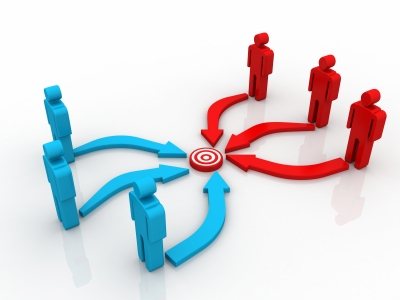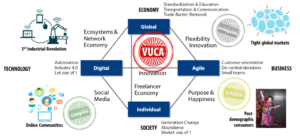In his book Reinventing Organizations: A Guide to Creating Organizations Inspired by the Next Stage of Human Consciousness Frederic Laloux presented a model for the evolution of organizations that uses colors to describe each stage starting with ancient red “wolf pack” organizations that form under a total “chief” leader. You can get a good overview of the different stages and the overall concept in this article.
The final stage is teal. Teal organizations are self-managed living entities that move toward realizing their potential. They are based on wholeness which accepts people as individuals and allows them to be themselves. More importantly, they are focussed on stakeholders instead of shareholders and equally consider the interest and value the contributions of employees and customers.
Organizations have always been the mirror of the societies they exist in and serve. The teal organization is a consequence of two other human evolutions: to more individuality and higher consciousness.
As individuals, we are more capable than ever to be ourselves. We can choose our education, jobs, roles, where and how we live. We can decide freely who we want to be, what we want to do, and how we live. Organizations increasingly struggle with integrating strong individuals who do not want to be role-boxed, coerced into pre-defined career models, exploited, or forced to do things that are against their beliefs.
As a race, our knowledge about our environment has grown tremendously, thanks to science. We know and see our planet in its entirety now. We are conscious that its resources are limited; its working is circular and that we need to make an effort to fit in better.
An essential enabler for teal organizations is our technical capabilities. Digitization and virtualization render the implementation of teal organizations easier than ever.
The teal organization promises resolutions to organizational ailments like low staff, power games, leadership abuse, short-term profit orientation, and low levels of innovation.
It also provides a framework for the application of modern concepts like edge execution, value-based leadership, purpose, agility, and strategic foresight.
Strategic Foresight is the capability of organizations to generate and action insights about the future. It is a critical capability of teal organizations who aspire to be open, agile and responsive to changes in their environment.
Teal organizations make sense, they are possible, happen already, and people want it. It is a hard trend: a trend that is to stay because other trends support it. You cannot ignore hard trends.



